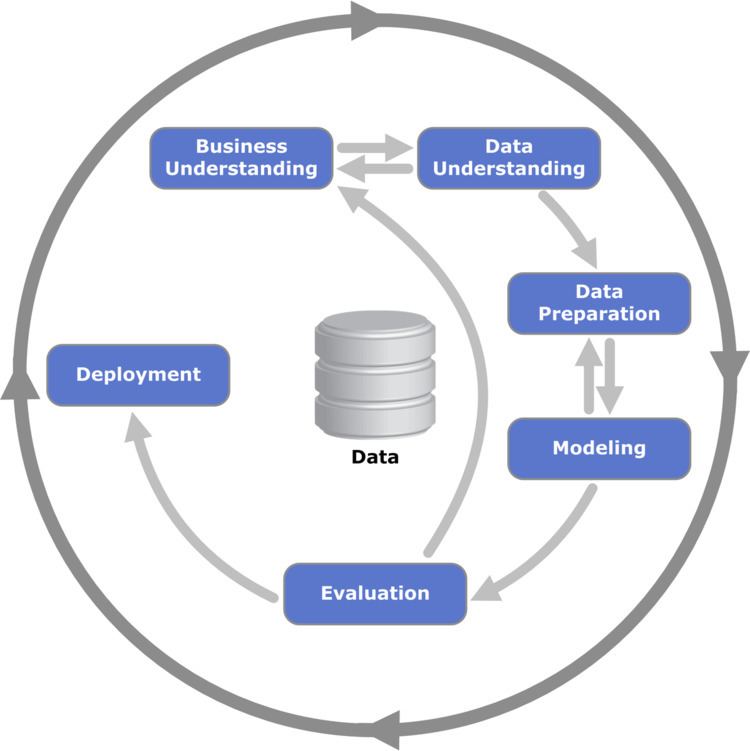 | ||
Cross Industry Standard Process for Data Mining, commonly known by its acronym CRISP-DM, is a data mining process model that describes commonly used approaches that data mining experts use to tackle problems. Polls conducted at one and the same website (KDNuggets) in 2002, 2004, 2007 and 2014 show that it was the leading methodology used by industry data miners who decided to respond to the survey. The only other data mining standard named in these polls was SEMMA. However, 3-4 times as many people reported using CRISP-DM. A review and critique of data mining process models in 2009 called the CRISP-DM the "de facto standard for developing data mining and knowledge discovery projects." Other reviews of CRISP-DM and data mining process models include Kurgan and Musilek's 2006 review, and Azevedo and Santos' 2008 comparison of CRISP-DM and SEMMA. Efforts to update the methodology started in 2006, but have As of 30 June 2015 not led to a new version, and the "Special Interest Group" (SIG) responsible along with the website has long disappeared (see History of CRISP-DM).
Contents
In 2015, IBM Corporation released a new methodology called Analytics Solutions Unified Method for Data Mining/Predictive Analytics (also known as ASUM-DM) which refines and extends CRISP-DM.
Major phases
CRISP-DM breaks the process of data mining into six major phases.
The sequence of the phases is not strict and moving back and forth between different phases is always required. The arrows in the process diagram indicate the most important and frequent dependencies between phases. The outer circle in the diagram symbolizes the cyclic nature of data mining itself. A data mining process continues after a solution has been deployed. The lessons learned during the process can trigger new, often more focused business questions and subsequent data mining processes will benefit from the experiences of previous ones.
History
CRISP-DM was conceived in 1996. In 1997 it got underway as a European Union project under the ESPRIT funding initiative. The project was led by five companies: SPSS, Teradata, Daimler AG, NCR Corporation and OHRA, an insurance company.
This core consortium brought different experiences to the project: ISL, later acquired and merged into SPSS Inc. The computer giant NCR Corporation produced the Teradata data warehouse and its own data mining software. Daimler-Benz had a significant data mining team. OHRA was just starting to explore the potential use of data mining.
The first version of the methodology was presented at the 4th CRISP-DM SIG Workshop in Brussels in March 1999, and published as a step-by-step data mining guide later that year.
Between 2006 and 2008 a CRISP-DM 2.0 SIG was formed and there were discussions about updating the CRISP-DM process model. The current status of these efforts is not known. However, the original crisp-dm.org website cited in the reviews, and the CRISP-DM 2.0 SIG website are both no longer active.
While many non-IBM data mining practitioners use CRISP-DM, IBM is the primary corporation that currently embraces the CRISP-DM process model. It makes some of the old CRISP-DM documents available for download and it has incorporated it into its SPSS Modeler product.
